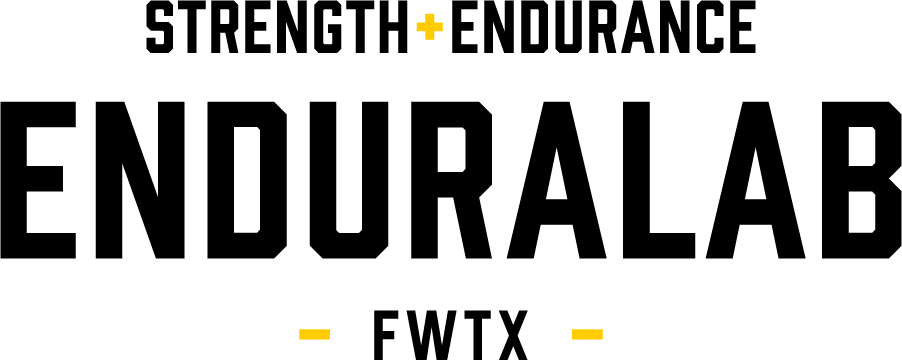We love to deadlift at enduraLAB. A big question lately has been, “What are the differences between the Sumo and Conventional Deadlift?” Visually, you can see a big difference pertaining to your set up position. Due to the positioning of the feet/hips, the Sumo set up recruits more motor units in the Glutes and Quadriceps. Your glutes get more work with your feet turning out and your hips more externally rotated, which is their primary action. Also, to achieve full lockout and knee extension your quadriceps are highly used. Another benefit to the Sumo Deadlift is the decreased tension on the low back with your torso in a more upright position. Give the Sumo Deadlift a try and feel the difference!
Form:
- As you approach the bar you want to place your feet at a comfortable distance wider than shoulder width with your toes slightly pointed away from your body. Usually a 45-degree angle is optimal.
- As you are getting your foot placement, you want to have your shins about a fist length away from the bar so that you do not have wasted movement trying to move the bar around your knees. This will give the bar just enough room to work with.
- Your hands should be placed directly underneath the shoulders to put them in an optimal position.
- From here, pull the slack out of the bar and tighten up the body. Lower your hips and feel the weight of your body shifting towards your heels. You should be thinking tension once your hands are placed on the bar.
- Spread the floor and stand up tall with the bar
- Rinse and repeat.
Some of our favorite cues:
- “Toes Out”
- “Stay Behind the Bar”
- “Pull Slack Out of The Bar”
- “Spread the Floor”
- “Stand Tall”
- “Hips to Bar”
How to scale:
- Decrease the intensity
- If you are having trouble performing the movement correctly and are unable to get into the proper position, simply reduce the weight so that you can execute the movement well.
- Reduce the Range of Motion
- Sometimes athletes do not have the range of motion to sit into their hips well enough to grip the bar. If this is an issue, elevate the bar. There are blocks specifically dedicated for this, but if they are not readily available, barbell bumper plates are your best option.
- Use a different exercise tool. (ex. Bodyweight, Kettlebell, Dumbbell, Sandbag.)
- The Sumo Deadlift can still be achieved by using another tool that might have less stress on the body and spine. If you are using a Kettlebell or Dumbbell, you can have the athlete set up their stance and try to hit a spot on the ground consistently to know if they are moving well.
Two Workouts to Improve Your Sumo Deadlift
- Strength Set – On a 15:00 Running Clock…
- Work up to a Heavy Set of 5 reps.
- The focus here should be working up in weight each round with about 2:00 minutes of rest in between each set.
- You should not take more than 7 Sets to reach your goal of a heavy set of 5 reps.
- A good way to attack this would be: 10x, 8x, 8x, 6x, 6x, 5x
- Power Set – 8 sets of 3 Reps
- Start by performing 3 sets of 3x Standing Broad Jumps with a 1:00 minute rest in between sets. This will prime the Glutes/Hams to contract harder during the lift. The landing of the broad jumps will also fire the quads for your lockout position on the Sumo Deadlifts.
- Once you have finished working up to your initial weight, which should be moderate/heavy weight, perform 6 sets of 3 reps for speed. You should try to move the bar as fast as you can. After each set, rest 3:00 minutes.



